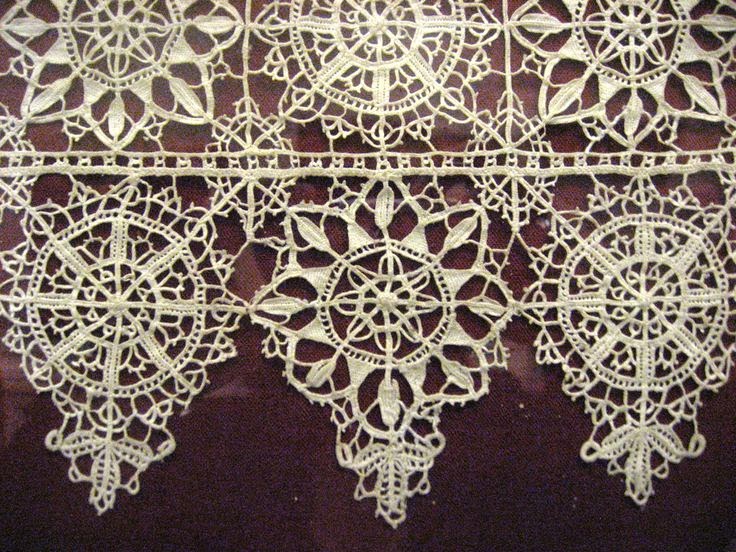Reticella Designs in Crochet
Reticella is thought to be an outgrowth of Punto Tagliato cut linen work, or in French, Pointe Coupe. Reticella is one of the oldest forms of Needlelace or needlepoint lace, which is the art of making lace with a needle and thread. Reticella needlelace dates back to 1530. Queen Elizabeth made Reticella needlelace fashionable by wearing elaborate gowns adorned with narrow cutwork edgings in Reticella. The geometric star and snowflake pattern with projecting points and scallops used in Reticella is often referred to as a 'Rosette'.
  |
|
Below is an example of a Crochet lace Reticella design from the 19th century.
|
 |
| Here is a needlelace design by Margaret Stephen's of NeedlelaceTalk which could easily be interpreted in crochet. |
So How do you Get Started?
Mr. John Hopper has a nice writeup on crochet in lace in his blog, "The Textile Blog". In this article Mr. Hopper talks a little about crochet influence in lace making. He also suggests several books on needle lace.
The Project Gutenberg has "The Encyclopeadia of Needlework" by Therese Dillmont available for download. The Chapter on Crochet is here: http://www.gutenberg.org/files/20776/20776-h/chapter_9.html
This is a book every needle worker should have in their library.
I found a couple good boards on Pinterest too:
https://www.pinterest.com/twizzleknit/reticella/
https://www.pinterest.com/twizzleknit/punto-antico/
Read and learn more about other laces techniques here: http://www.marlamallett.com/l-other.htm




Comments